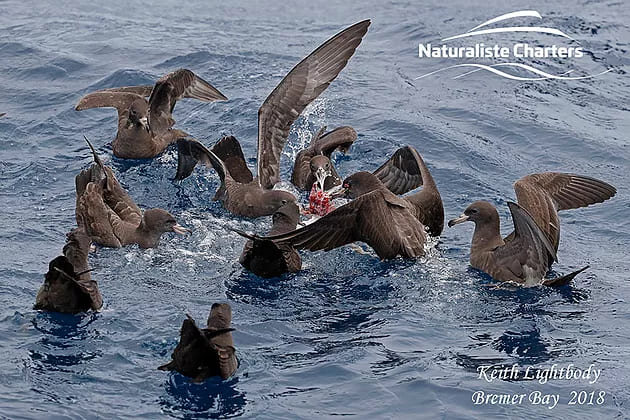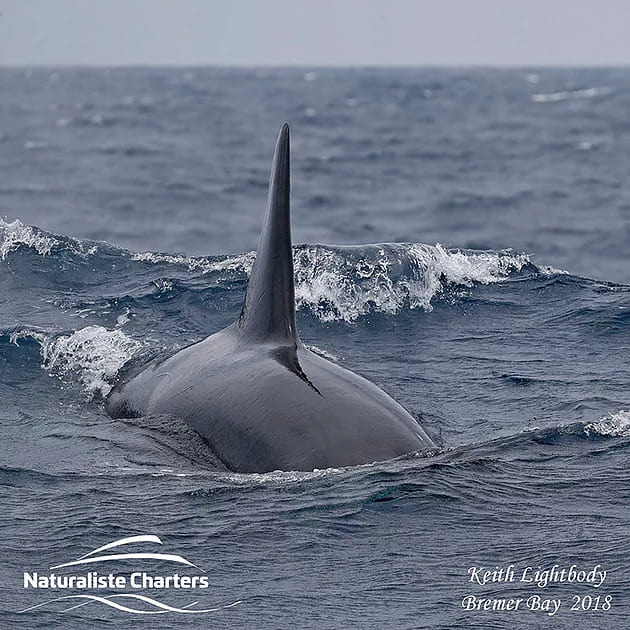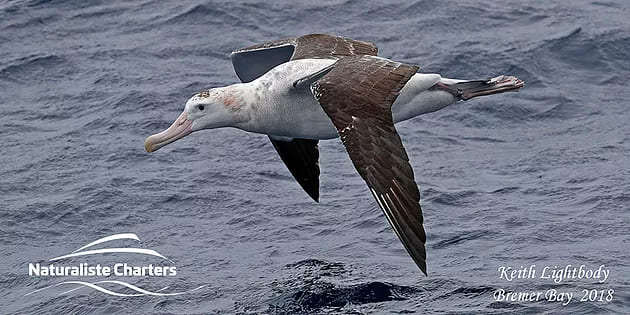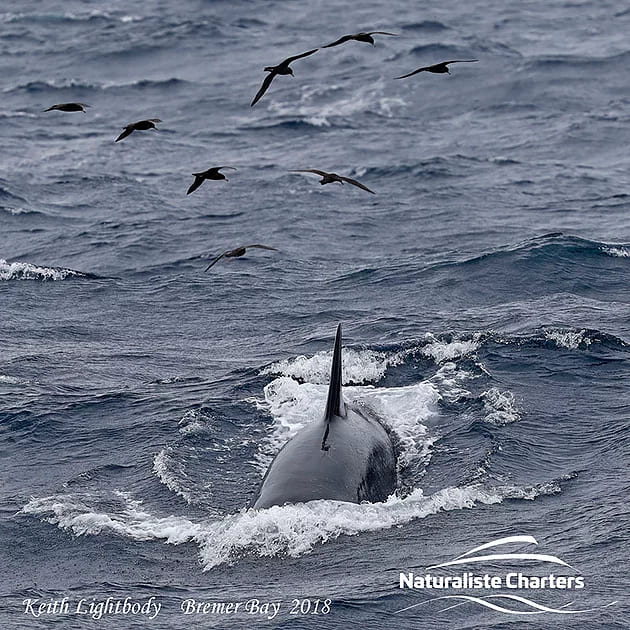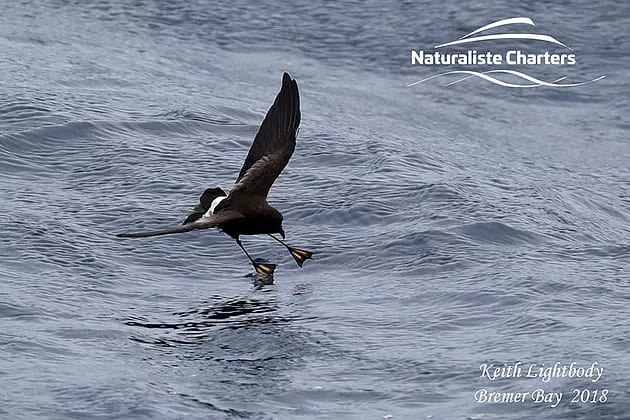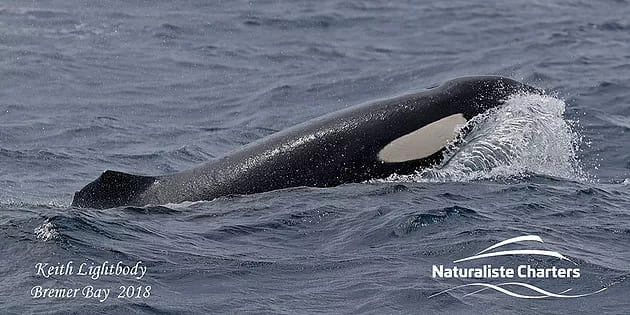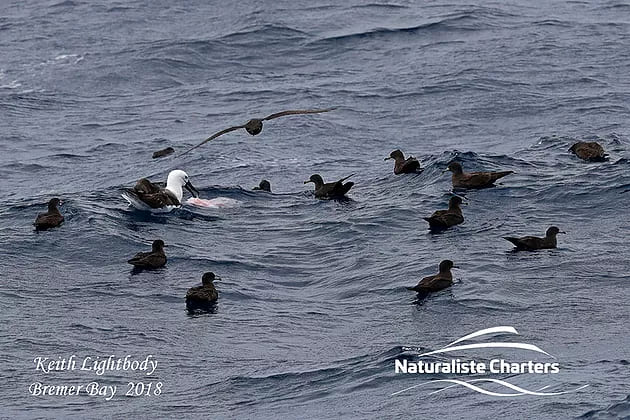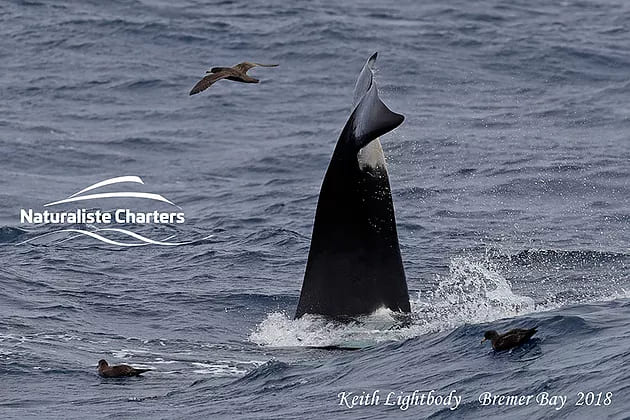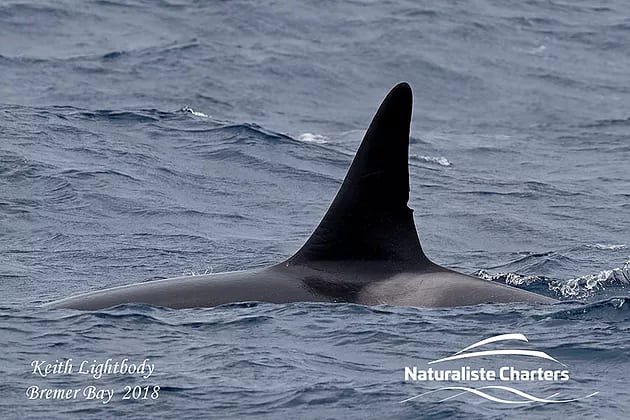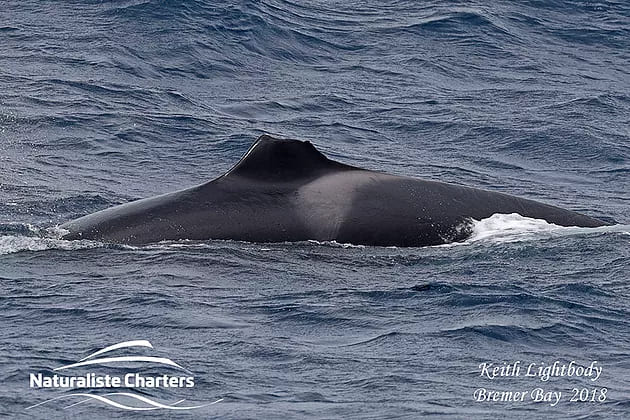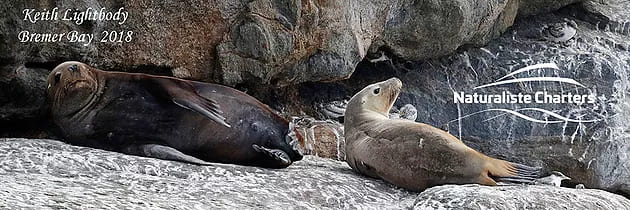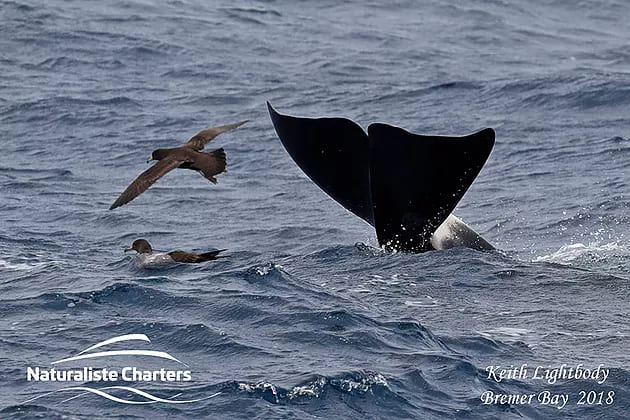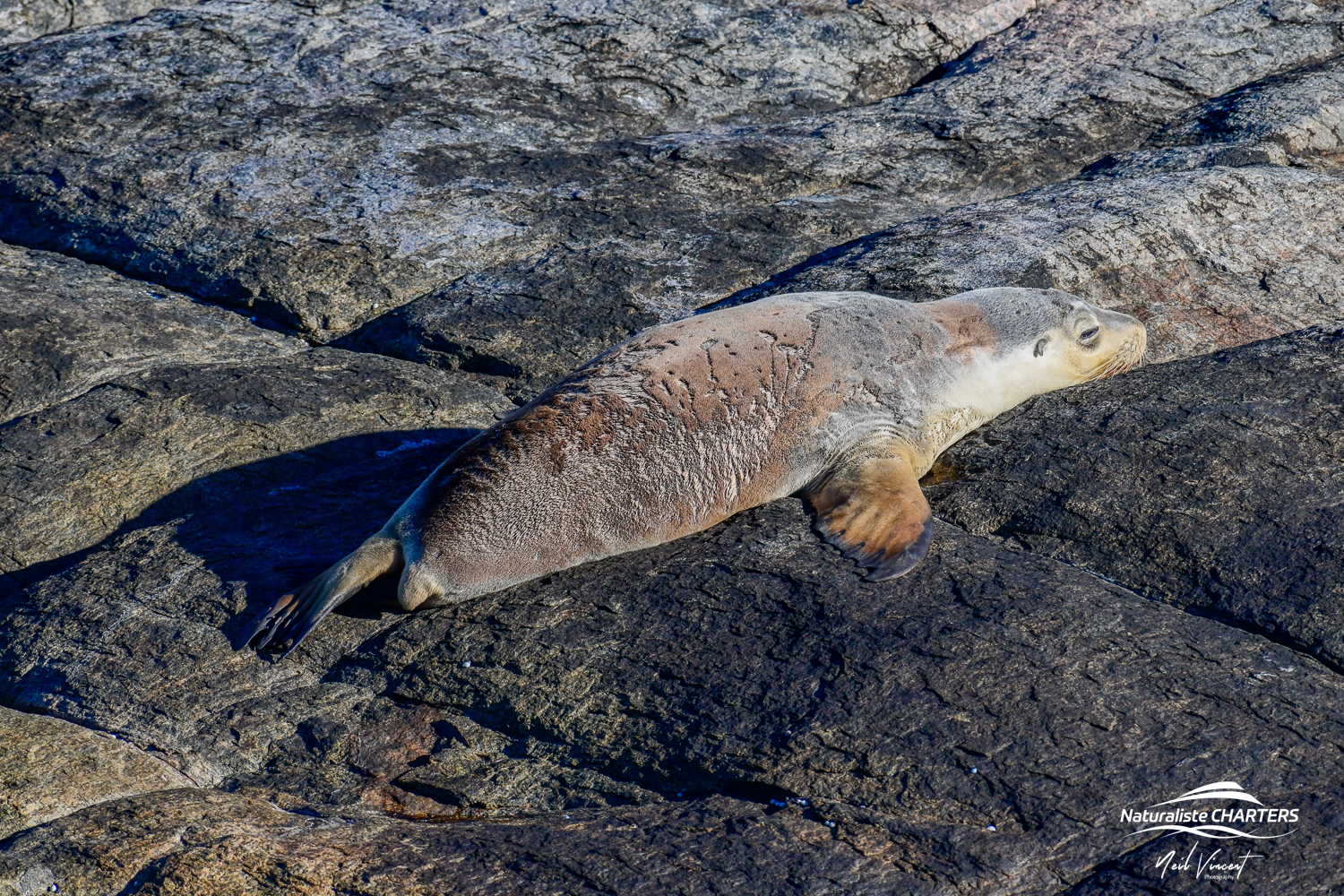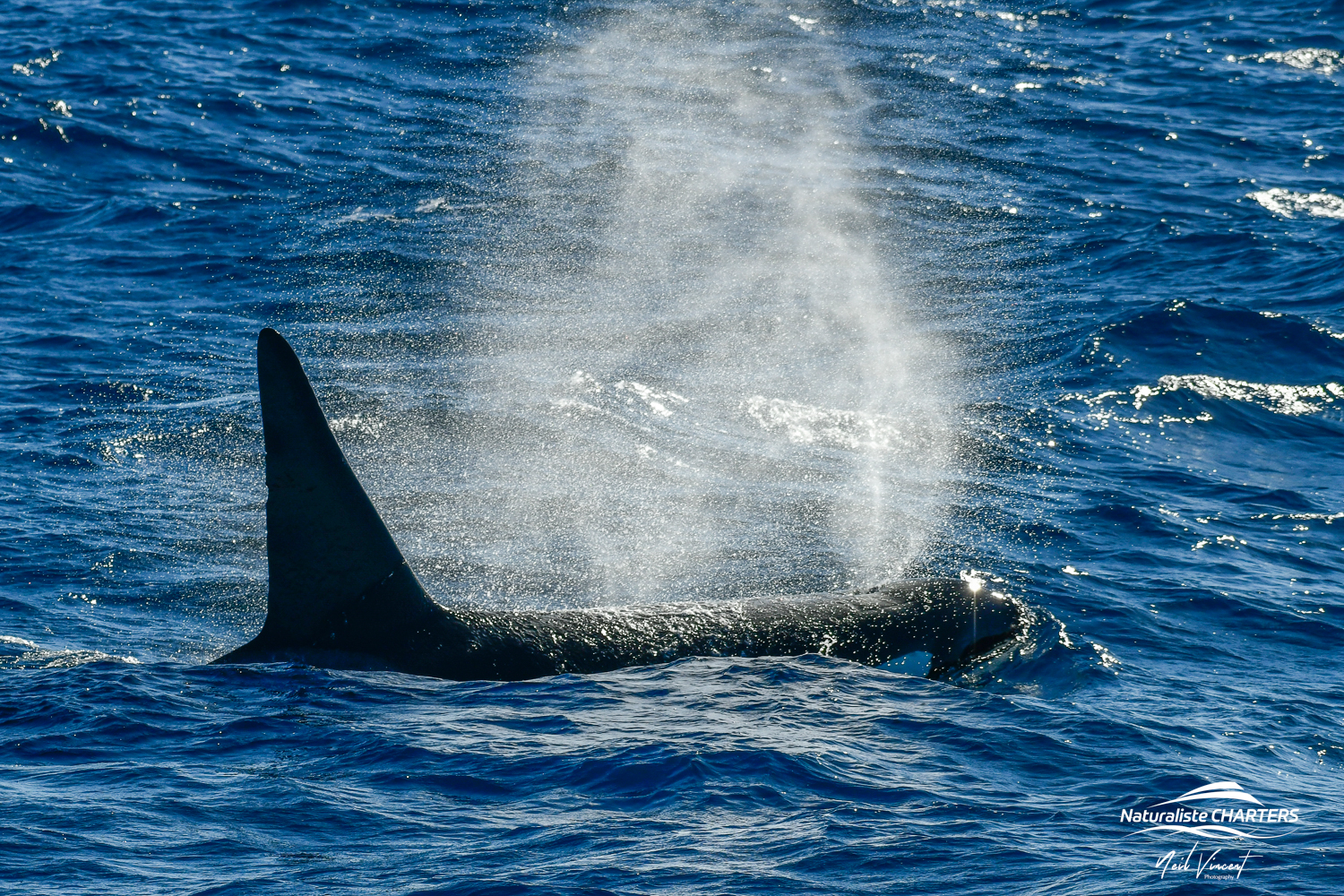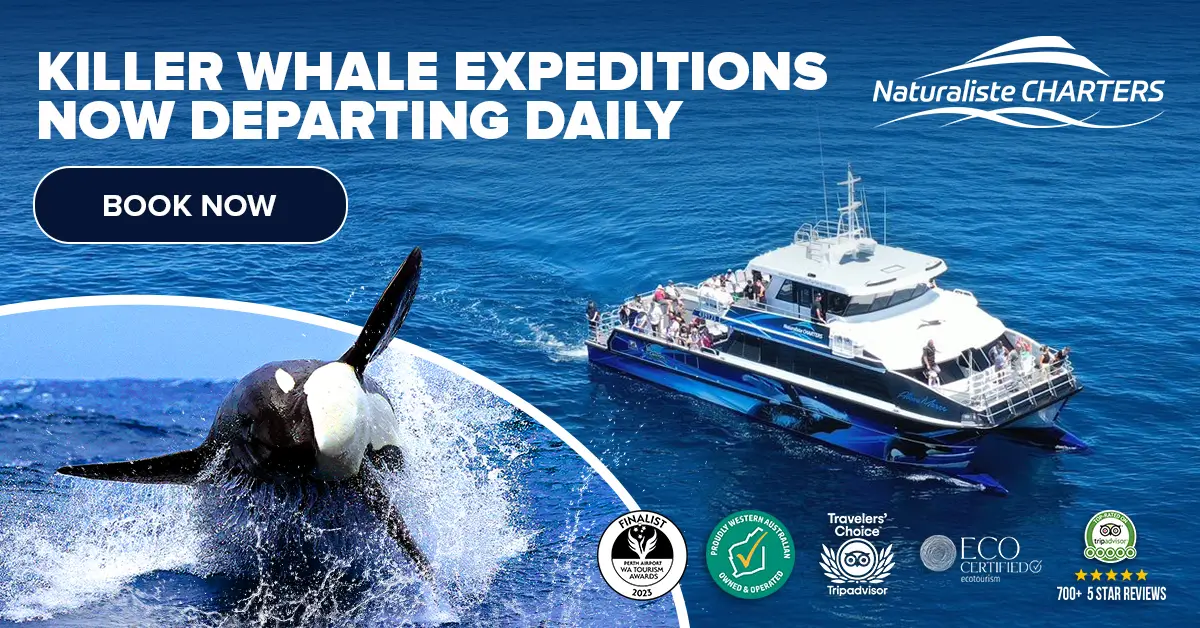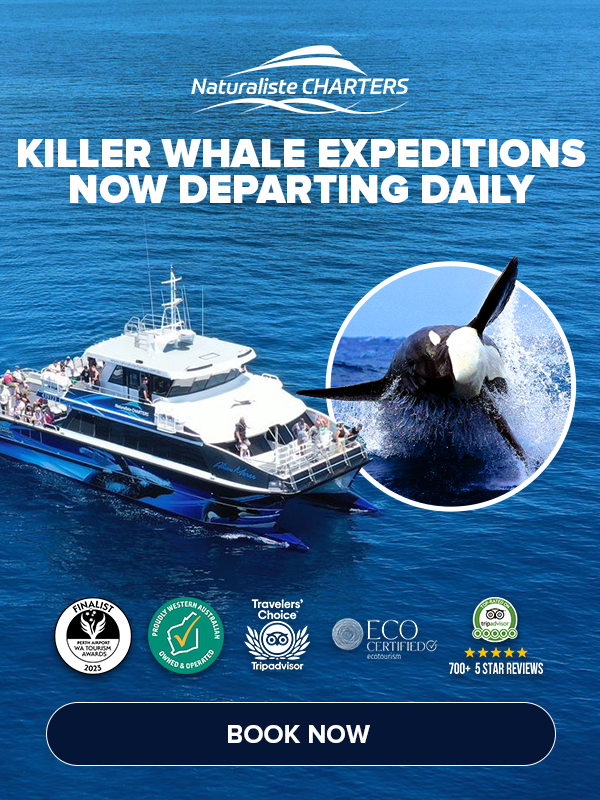It felt like we were in the middle of a wildlife documentary on yeaterday’s expedition. As we dropped off the edge of the continental shelf into deep water, we were instantly excited to see large numbers of birds. We sighted blows immediately too. But not just from one pod of killer whales. There were blows ahead of us, and blows to our port and starboard sides. We made our choice and edged toward the closest pod. No sooner had we got within 200m, the pod detoured directly toward us. Shouts of “incoming” filled the air as the killer whales approached, surging from the swells and skimming just below the surface, turning on their sides to eye the watchers on the deck. A single animals spy hopped just under our bow. Caught by surprise, even us crew don’t have a photo of that one.
We saw familiar fins immediately, including one of the most easily recognised animals, Split Tip, a female killer whale well known as one of the more curious and interactive animals we see at the canyon. We were overjoyed to also sight Bindi and her calf Shadow, so named by the students of the Bremer Bay Primary School when we first photographed it in 2017. Shadow is now almost 12 months old and has grown well over the past 9 months, and is in good condition.
We could see some intense bird avtivity some 800m ahead, and so bid farewell to our old friends and moved to investigate. As we closed the gap with the pod, things got really interesting. The killer whales picked up their pace, surging ahead of us in showers of whitewater. Along our port and starboard sides, others rocketed through the swells, outpacing our vessel. We held our breath and shouted with amazed excitement in equal measure as we watched multiple black and white missiles rocket through the southern ocean at top speed, surging from the swells in a storm of whitewater, an awe inspiring sight that will be etched in our memories forever.
The top speed travel slowed, and the killer whales began to make the short, tight dives they use when feeding. The slaty grey swells around us were patterned with oil slicks, and the activity of the large group was intense but difficult to make out as we aimed to watch as bystanders and not interfere with the activity of the powerful predators. We now had roughly 40 animals surrounding us, intent on their meal and unconcerned by our observation. Killer whales must consume 5% of their body weight daily, which clearly leaves no time for distractions.
Killer whales of all shapes and sizes surfaced around us. Large bulls including the magnificent El Notcho, and many females and juveniles joined the fray. Several animals surfaced with chunks of red meat in their mouths, and incredibly, just below the surface off our starboard bow a female and calf appeared, and rolled to pass a chunk of meat from one to the other.
Sharing food is common in killer whale society. Their place at the top of the food chain is underpinned by their cooperative social structure, where hunting is a group effort and the spoils are shared. Interestingly, as we passed on to our customers, in well studied populations, the adult males are some of the most well looked after members of the pod, parlicularly by their mothers. We have to look below the surface to see why this would be a strategy that benefits the family.
Us humans like to make things complicated, but really, in the animal kingdom there are two things that count. Get enough energy (food), and pass on your genes. As we have discussed before, killer whales family structure revolves around a mother and her offspring, the matriline. If a daughter of the matriarch (monther) has a calf, the matriarch’s pod bears the cost of raising that calf. This includes the energy required for the 17 month gestation, followed by a 12 month lactation period, and the ongoing cost of hunting and protection from predation. On the other hand, the male offspring mate with a female from another pod. In this scenario, the genes of that matriline are still passed on, but the cost of raising the calf is incurred by the other pod. So, there is a valid reason adult male killer whales are mummys boys!
We enjoyed our own delicious lunch on board, surrounded by relaxed but still feeding killer whales and their attendant seabirds. Observing a swirl of pelagic seabirds feeding on an oil slick in the southern ocean is an amazing sight. Tiny storm petrels, no bigger than a budgie skip delicately across the surface, dipping their beaks to feed on the energy rich oil. Shearwaters squabble and swirl, while albatross wheel on the wind or sit on the surface gobbling scraps. We were pleased to see Lucky amongst the killer whale throng, in great condition for another year despite his missing dorsal fin. Surrounded by the sights, sounds and smells of the successful hunt, the feeling on deck was very much that we were in the middle of a wildlife documentary.
We had a bird expert amongst our passengers today, which was a very good thing as of the hundreds of birds that surrounded us, it takes an expert to spot a rare one. In this case, to use Bill’s own words, a mega rare one, the beautiful Barau’s Petrel.
Until tomorrow,
The Bremer Canyon Crew

